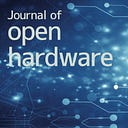Open Science Hardware for Environmental Monitoring
Pushing the boundaries of innovative and accessible tools
Shannon Dosemagen, Alison Parker, Katie Hoeberling, Ashley Schuett
How we collect environmental data is changing as new tools and approaches promise to broaden how people interact with this data. In particular, innovation in low-cost and open science hardware tools is making it easier for people to collect more — and different — data, and to use environmental data for their own purposes and on their own terms.
This progress comes at a time when it is becoming increasingly clear that the tools created and used by government are insufficient for understanding local and global pollution, and a changing climate.
There is huge potential for these tools to change environmental monitoring. However, progress is limited mostly to efforts outside government, as academia, NGOs, and entrepreneurs push the boundaries of innovative and accessible tools. For this potential to be fully realized, policy-makers with a range of priorities must re-think science tools, and address how governments at all levels assess and use science tools and their data.
To us, the opportunities are clear, but the barriers are murky. To interrogate barriers to further adoption of Open Hardware in environmental monitoring, the Wilson Center and Open Environmental Data Project hosted a roundtable on April 27, 2022 welcoming participants from government, philanthropy, civil society, and academia to identify current trends, issues, and potential solutions for a U.S. public policy audience. Working together to explore how various sectors approach open hardware and low-cost sensors, participants identified key factors that facilitate or hinder their use. Additionally, participants identified promising policy avenues to integrate innovative tools into environmental decision-making better. The result was a list of thirteen points that outline how we can collectively work together towards increasing the value of low-cost and open scientific tools for local, state, tribal, and national government. These thirteen points support high-level consensus, addressing opportunities and barriers and guiding action. The themes that rose to the top included:
- Technology innovation outpaces the speed of government processes and the added complexity of government contracting
- Coming together on tool evaluation, standard formats, and QA/QC
- Building trust between communities and governments, and in tools and their data
- Philanthropy to rethink funding for scale
- Standardizing resources, including hardware, software, data, and the interpretation of data
- A holistic approach to software in tandem with hardware, the life and afterlife of data, and intentional planning
- Integrating the qualitative by valuing voice, experiences, and the community perspective
- Making progress through enthusiasm, sharp focus, and collaboration
- Instigating culture change by broadening perspectives in institutions
- Identifying interconnected resources and pathways to shared solutions by clearly connecting needs with opportunities
- Creating data that is accessible and useable
- Considering labor by valuing work on the ground, re-thinking expertise, and resources for sustainability
- Building partnerships upfront for more relevant and useful systems
Open hardware in the highly standardized realm of environmental monitoring requires nuanced observation and additional perspectives to be fully realized. To this end, roundtable participants contributed blogs on some of the thematic topics identified above. These can help us better align and understand the co-existing opportunities and challenges faced by the policy-making community and developers and users of open hardware from across a broad array of disciplines.
The posts included in this series represent a wide array of topics related to open hardware and environmental monitoring. If you’re new to open science hardware, we recommend reading our 2020 policy brief on “building better science” and the associated collection of blogs (summarized here). Then, in this environmental hardware series, read further about rethinking funding for scale and maintenance, valuing the labor workflow, standardization of resources, useful and accessible data, and more. Posts will be made available on an ongoing basis and will be openly licensed to support their distribution and re-publication in various venues that will invite more people into the conversation. We look forward to continuing to elevate these important topics in the environmental and climate space.
Posts in this series will be linked below as they are added to the Journal of Open Hardware Medium page:
Open data and open hardware: Tools for collaborative solutions to water challenges, Scott H. Ensign
Opening your science with community engagement, Caitlyn A Hall
Valuing work “on the ground”: Making the hidden work visible in open hardware, Julieta Arancio
Sustaining community cohesion and enthusiasm with a cadence of “sparks” and social activities, Brianna Johns and Pen-Yuan Hsing
Circumventing silos in open hardware to create opportunities for interconnection, shared agendas, and collective resources, Ashley Schuett, Juan Pedro Maestre, and Katie Hoeberling
A holistic approach: Intentional planning to set community data collection programs up for success, Julie Vastine
The need for open technology standards for environmental monitoring, Shannon Dosemagen and Luis Felipe Murillo
Beyond Access: Broadening the role of open science hardware in environmental monitoring innovations, Shannon Dosemagen and Alison Parker
